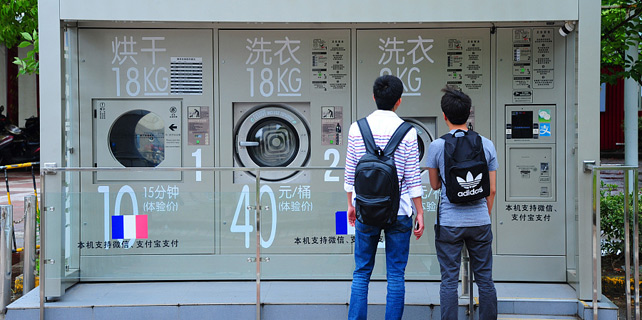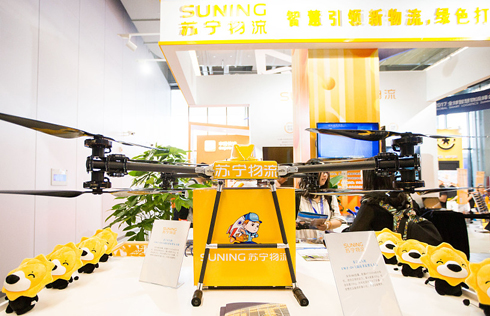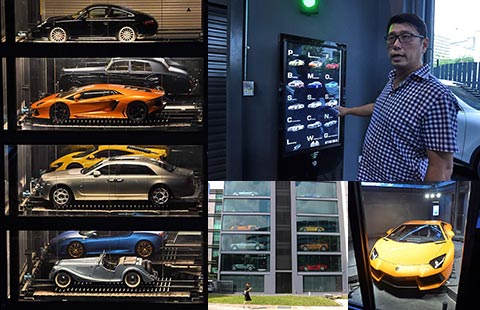

The mobile trend is no more a trend but today. Those who use mobile apps were technology savvy people, but in future the users will be everybody, according to John Lin, CEO of eBay Greater China on May 28 in Beijing in an interview.
Reporter: Mr Lin, just now you talked about the mobile trend in the future. Could you elaborate a little bit on that?
John Lin: Mobile trend is the destination for the e-commerce. There is no mobile trend. Three years, five years from now, Everything will be mobile.
A consumer might start shopping at home in front of his home computer. And he might leave, and he get his cellphone and he continue to shop and explore. Then he might pay on the cellphone, or he might go somewhere, and he use another device to continue his journey.
So, we foresee that three or five years from now, all the shopping will be done on mobile. So mobile trend is really the only trend.
Reporter: How is the mobile future relevant to your business in Greater China?
Lin: What mobile shopping means is more a personalized experience. So the platform will provide the buyer a much better shopping experience and search experience. So when the Chinese merchants or manufacturers sell on eBay for example, because of the more personalized experience, the value and the selection is much easier to be exposed to the buyers. So this is the net benefit to our sellers.
But at the mean time our sellers, the Chinese merchants and manufacturers whoever sell on eBay, need to also recognize the need to provide the personalized service. So they have to optimize their listing for a personalized experience.
Reporter: Talking about Chinese supplier, what will you or eBay Greater China do to help them?
Lin: We provide a lot of educations and we also provide a lot of protection programs, protect our sellers against any kinda abuse buyers or loss through logistics, so on so force. So we do a lot of services, including big data, including education, including logistics, including payment soft. So we do a lot.
Reporter: Do you see any challenges?
Lin: In heavier and more expensive items, it’s better our goods already located in the country, right? So the buyers are more at ease with return. Because when they buy heavy and expensive items, the first thing they worry about is if the thing were those they don’t like, how will they return it.
The domestic return solution is a very important barrier to overcome, if you really want to expand the business. There are numerous barriers and challenges like this as our business continue to scale. We overcome them one after the other.
Reporter: So all these kind of work, can be finished on the mobile platform?
Lin: Yes. Because there’s no option. I told you that all the commerce are going mobile, this is going to be a continuous undisrupted transferable experience from device to device, from online to offline, from this platform to that platform.
But the good thing is we are enhancing the channel, at anytime anywhere, the conversion is a lot higher. If you take everything in balance, you have to do more to make mobile experience work.
On mobile, the conversion rate is a lot higher. Because you just increase the opportunities that the buyers can see your goods and buy your goods. So net-net is very healthy eco system evolution. So net-net is all good.
Reporter: Specifically for eBay, who do you see the most frequent users of mobile apps and who will use mobile apps the most in future?
Lin: Yes. That’s an interesting question. Our major sites now, we have been growing mobile commerce penetration from two or three years ago, 0 percent, to now, 30, 40 percent. So, 30 or 40 percent of our overall buyers are buying on eBay through their mobile devices.
The demographic is very interesting, at the beginning most of the user are tech savvy users maybe more male than female. Right? But now is really just shopping enthusiastic people who like to shop. And we have mainly mobile experience so easy and so simple.
Now the mobile demographic is very representative and consistent without overall demographic. So it is purely thirty forty percent, and next year we will see forty fifty, fifty sixty. It’s becoming a prevalent experience. Everybody is using mobile
 Live streaming boosts zongzi sales
Live streaming boosts zongzi sales
 Big Data Expo opens
Big Data Expo opens
 Smart sharing washing machines available in Shanghai
Smart sharing washing machines available in Shanghai
 Innovative designs highlight industrial design week
Innovative designs highlight industrial design week
 Smart tech to shake up delivery industry
Smart tech to shake up delivery industry
 Chinese youths showcase innovative talents at tech competition
Chinese youths showcase innovative talents at tech competition
 Butterfly wings to inspire new solar power technology
Butterfly wings to inspire new solar power technology
 Singapore dealership sells luxury cars in 15-floor vending machine
Singapore dealership sells luxury cars in 15-floor vending machine